Yu Guangyan
Salivary Gland Disease Diagnosis, Treatment, and Research Center
Our team is dedicated to unraveling the pathogenesis of salivary gland disorders, advancing innovative clinical management strategies, and spearheading interdisciplinary translational research on submandibular gland transplantation for severe dry eye disease, with a commitment to bridging mechanistic discoveries into precision therapeutics.
Our team has driven transformative advancements in salivary gland disease management through three core innovations: (1) Functional parotid surgery—where we pioneered techniques like partial parotidectomy, buccinator muscle flaps to prevent Frey’s syndrome, and optimized deep-lobe tumor approaches, standardizing guidelines adopted in over 100 hospitals (30,000+ cases); (2) Submandibular gland transplantation—through which we established the world’s largest clinical cohort for severe dry eye treatment, uncovered capsaicin receptor-mediated secretion regulation, and developed tear-control strategies; (3) Gland preservation—where we innovated radiation-protective transposition, characterized IgG4-related sialadenitis, and refined gland-sparing tumor/neck dissection techniques. These breakthroughs redefined treatment paradigms from destructive surgery to functional preservation, significantly improving outcomes and establishing our internationally recognized, guideline-backed framework for salivary gland therapeutics.
DIRECTOR
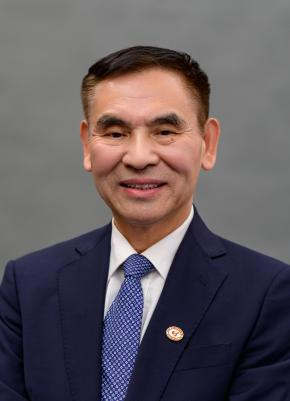
Guang-yan Yu, DDS, PhD
Professor, Department of Oral and Maxillofacial Surgery,
Peking University School of Stomatology
gyyu@263.net
Dr. Yu is professor of Department of Oral and Maxillofacial Surgery, Peking University School of Stomatology. He is currently the honorary president of the Chinese Stomatological Association (CSA); Former President of the CSA (5th term), Vice President of the Chinese Medical Doctor Association (4th term), and President of the Asian Association of Oral and Maxillofacial Surgeons (11th term). He served as Dean of Peking University School of Stomatology from 1996 to 2009. His research focuses on salivary gland diseases, oral and maxillofacial tumors, and submandibular gland transplantation for severe dry eye disease. He has led over 40 national and provincial research projects, published 530+ scientific papers (230+ SCI-indexed), and authored 40+ textbooks and monographs. As the principal investigator, he received the National Science and Technology Progress Award (Second Class) and three provincial/ministerial-level Science and Technology Awards (First Class). He mentored nearly 90 graduate students and postdoctoral fellows and was honored as a National May 1st Labor Medal Recipient,National Advanced Worker in Healthcare, and National Outstanding Scientific and Technological Worker. He was awarded Honorary Fellowships by the Royal College of Surgeons of Edinburgh and the Royal College of Surgeons of England. A pioneer in functional parotid surgery, submandibular gland transplantation, and gland-preserving techniques, his work has established globally recognized guidelines and transformed the management of salivary gland diseases.
RESEARCH AREAS
Functional surgery of the parotid gland
Internationally pioneered functional surgery of the parotid gland, significantly reducing surgical complications. Our team was the first to propose a new surgical approach for Warthin's tumor of the parotid gland that preserves function and avoids "recurrence"; a new method of sub-fascial flap of the buccinator muscle to prevent taste sweating syndrome; a new approach to surgery for deep lobe tumors of the parotid gland. We introduced new parotidectomy techniques in over 100 hospitals nationwide, with a total of more than 30,000 cases. We identified new clinical and pathological features of salivary gland tumors, and led the development of "Guidelines for the Diagnosis and Treatment of Salivary Gland Tumors."
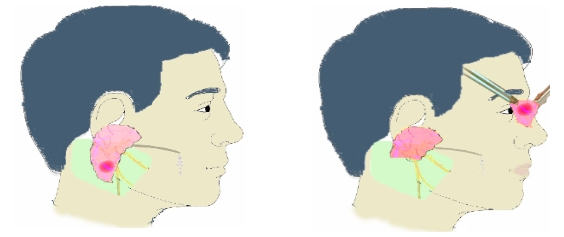
New surgical approach for salivary gland tumors: Partial parotidectomy
Submandibular gland transplantation for the treatment of severe dry eye
Leveraging interdisciplinary advantages, collaborating with ophthalmology and basic medical experts, innovatively using oral and maxillofacial surgical methods to treat difficult-to-treat eye diseases. We completed clinical and basic research on the largest number of cases worldwide using submandibular gland transplantation to treat severe dry eyes. Using a translational medicine approach, we first proposed a new mechanism of activating capsaicin receptor regulation of submandibular gland secretion, as well as a new strategy for artificially regulating transplanted submandibular gland secretion targeting the receptor. We established a new procedure for preventing postoperative tearing after submandibular gland transplantation, significantly improving clinical efficacy. We led the development of "Guidelines for Vascularized Autologous Submandibular Gland Transplantation for the Treatment of Severe Dry Eye Disease."
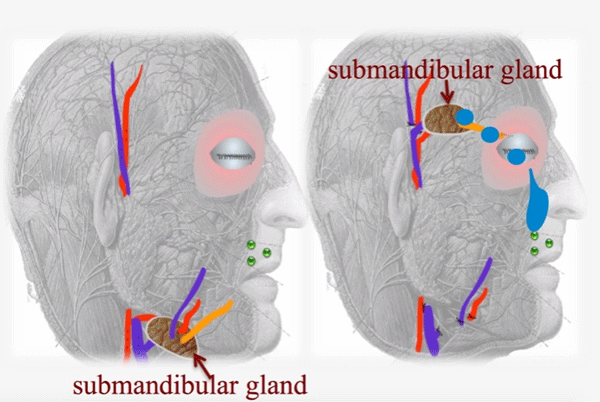
Submandibular gland transplantation for the treatment of severe dry eye
Establish a treatment system for submandibular gland preservation
We pioneered in conducting submandibular gland transposition to prevent radiation-induced xerostomia, partial submandibular gland excision for treating benign tumors of the submandibular gland, and neck dissection surgery with preservation of the submandibular gland. We also revealed the clinical, pathological, and imaging characteristics of IgG4-related sialadenitis, established a new technical system for submandibular gland preservation treatment, and applied it in clinical practice.
RECENT PUBLICATIONS
Contribution of interleukin-4-induced epithelial cell senescence to glandular fibrosis in IgG4-related sialadenitis
Arthritis Rheumatol, June 2022
SHED-derived exosomes ameliorate sj gren's syndrome-induced hyposalivation by suppressing Th1 cell response via the miR-29a-3p/T-bet axis
ACS Appl Mater Interfaces, January 2025
Type 2 diabetes-induced hyposalivation of the submandibular gland through PINK1/Parkin-mediated mitophagy
J Cell Physiol , January 2020
Interleukin-13 promotes cellular senescence through inducing mitochondrial dysfunction in IgG4-related sialadenitis
Int J Oral Sci, June 2022
C1q/tumor necrosis factor-related protein-6 attenuates TNF-α-induced apoptosis in salivary acinar cells via AMPK/SIRT1-modulated miR-34a-5p expression
J Cell Physiol, August 2021
Submandibular gland transplantation vs minor salivary glands transplantation for treatment of dry eye: a retrospective cohort study
Am J Ophthalmol, September, 2022
7SK acts as an anti-tumor factor in tongue squamous Ccell carcinoma
Front Genet, April 2021
Use of saliva flow rate measurement in minor salivary glands autotransplantation for treatment of severe dry eye disease
Br J Ophthalmol, July 2022
Primary hyper-IgE-related salivary gland disease: a new disease entity
Laryngoscope, November 2022
Diagnosis and treatment of radioactive iodine-induced sialadenitis: a 10-year endoscopic experience
Laryngoscope, November 2024
Eosinophilic sialodochitis: a type of chronic obstructive sialadenitis related to allergy
Laryngoscope, March 2021
Diagnostic utility of submandibular and labial salivary gland biopsy in IgG4-related sialadenitis
Clin Rheumatol, December 2020
Imaging-based diagnosis and classification of radioactive iodine-induced sialadenitis
Oral Dis, October 2024
SHED-exos promote saliva secretion by suppressing p-ERK1/2-mediated apoptosis in glandular cells
Oral Dis, July 2024
Lacrimo-auriculo-dento-digital syndrome with AIRE mutation: a case report
J Stomatol Oral Maxillofac Surg, November 2022
Disruption of tight junction structure contributes to secretory dysfunction in IgG4-related sialadenitis
J Mol Histol, February 2020
Utility of navigation system guided submandibular gland core needle biopsy in the diagnosis of immunoglobulin G4-related sialadenitis
Int J Oral Maxillofac Surg , September 2023
Identifcation and culture of functional salivary gland ductal epithelial cells
Histochem Cell Biol, August 2024
Histopathological changes in salivary glands after radioactive iodine treatment for thyroid diseases
Oral Surg Oral Med Oral Pathol Oral Radiol, September 2024
Identification of circRNAs expression profiles and functional networks in parotid gland of type 2 diabetes mouse
BMC Genomics, May 2024
TEAM
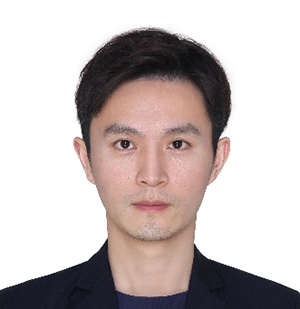
Jia-zeng Su, PhD
Chief Physician, Professor, Doctoral Supervisor
sujiazeng@163.com
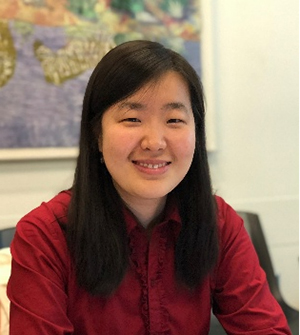
Xin Cong, PhD
Researcher,Doctoral Supervisor
Independent PI of the National Key Laboratory of Vascular Homeostasis and Remodeling.
congxin@bjmu.edu.cn
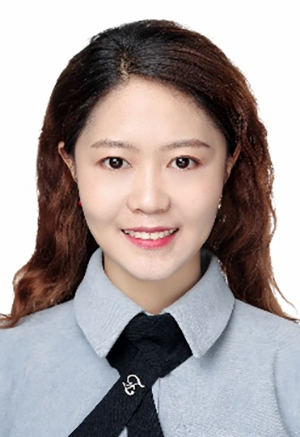
Hui Zhu, PhD
Postdoctoral Researcher
m15521277155@163.com
CONTACT
Guangyan Yu
+86-10-82195995
gyyu@263.net
Oral and Maxillofacial Surgery,
Peking University School and Hospital of Stomatology,
No.22 Zhongguancun South Avenue,
Haidian District, Beijing 100081, PR China
last text: Deng Lab
next text: GUO Chuanbin Team






